Your home is full of toxins that you may not be aware of, coming from building materials, upholstery, furnishings and smoke. These can cause serious health problems, but the good news is that, along with good ventilation, you can have cleaner air indoors with a little help from the plant kingdom.
To know which plants to choose, there’s nobody better to turn to than the experts at NASA, who originally started studying plants’ air-purifying abilities for use on space stations.
Here are 20 plants that improve the air quality in your home, according to the NASA Clean Air Study.
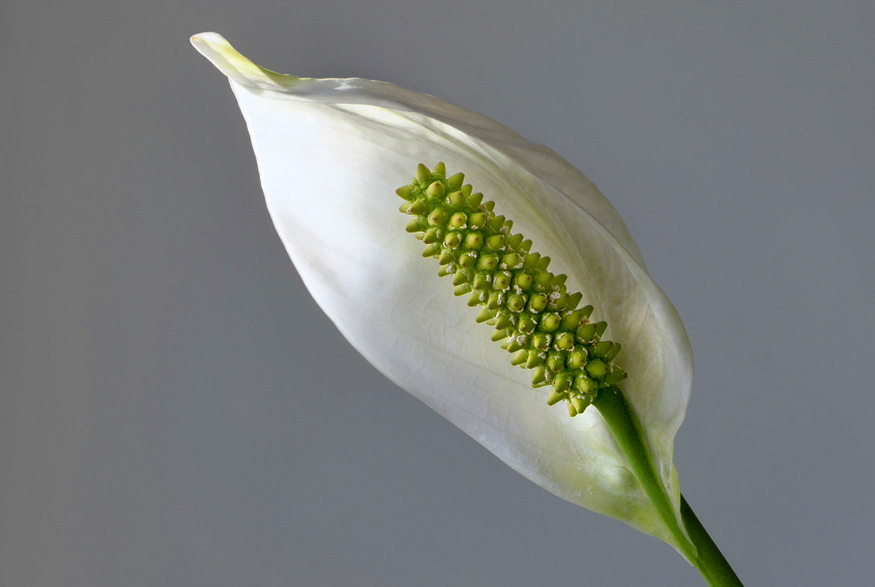
1. Peace Lily
There are several species of the genus Spathiphyllum that are known as peace or Spath lilies. They remove benzene, formaldehyde, trichloroethylene, xylene, toluene and ammonia from the air and don’t need lots of sunlight. However, they can be toxic, so keep them out of reach of kids and pets.
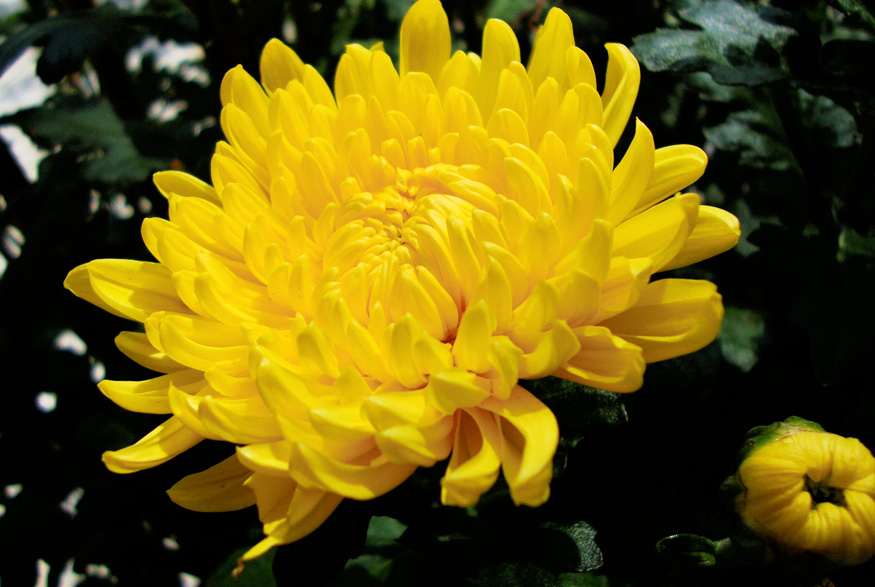
2. Florist’s Chrysanthemum
The florist’s chrysanthemum or garden mum, Chrysanthemum morifolium, removes benzene, formaldehyde, trichloroethylene, xylene, toluene and ammonia from the air but works best when it’s flowering. It’s toxic to cats and dogs.
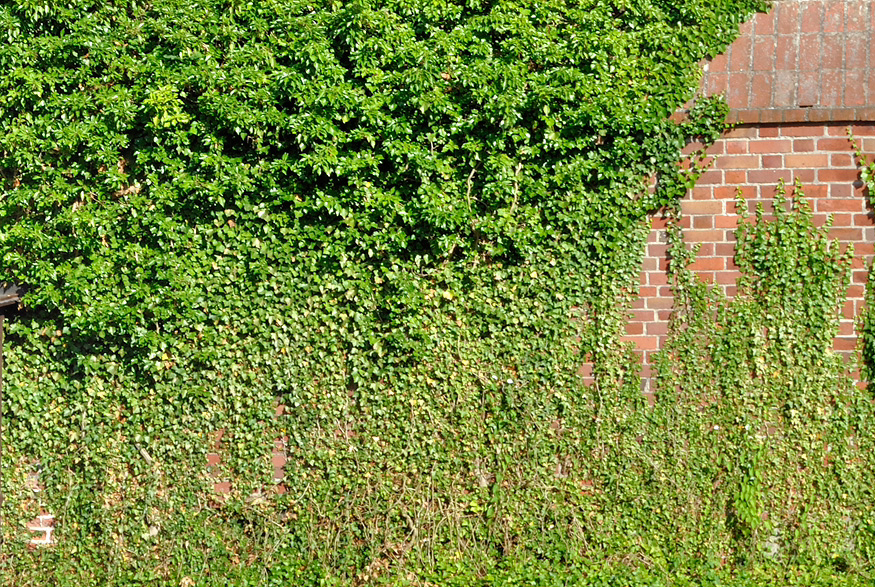
3. English Ivy
Hedera helix, the ivy often seen covering outside walls, also looks great indoors. It removes benzene, formaldehyde, trichloroethylene, xylene and toluene from the air but is toxic to cats and dogs. If you’re allergic to plants from the carrot, parsley or celery family, you may be allergic to ivy too.

4. Snake Plant
Also known as mother-in-law’s tongue, the snake plant or Sansevieria trifasciata removes benzene, formaldehyde, trichloroethylene, xylene and toluene from the air. It’s a hardy plant that’s easy to take care of but is mildly toxic to cats and dogs.
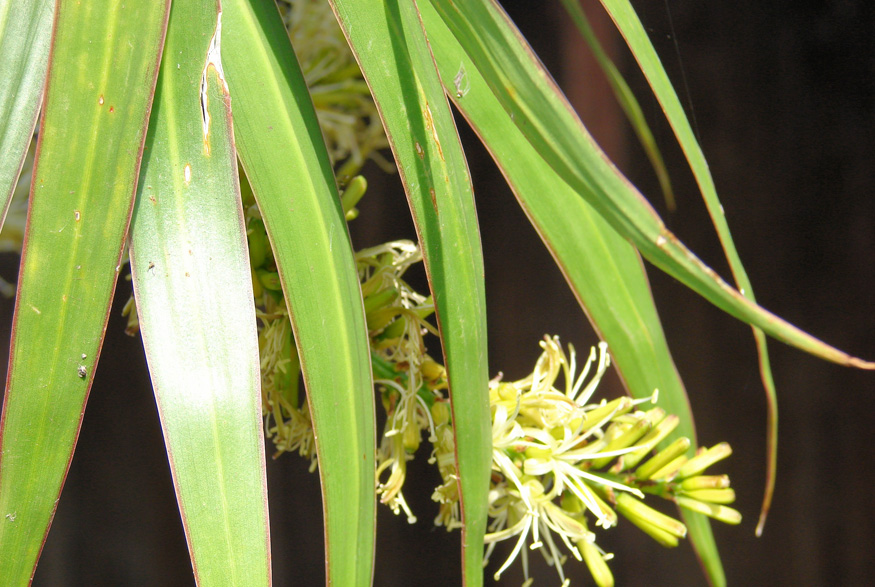
5. Red-edged Dracaena
The red-edged dracaena, Dracaena marginata, is related to the song of India. It removes benzene, formaldehyde, trichloroethylene, xylene and toluene from the air but is toxic to cats and dogs.

6. Lilyturf
Liriope spicata, also known as lilyturf, liriope or monkey grass, is usually grown outdoors as a ground cover but does well indoors on a windowsill too. It removes formaldehyde, xylene, toluene and ammonia from the air and is safe to have around cats and dogs.
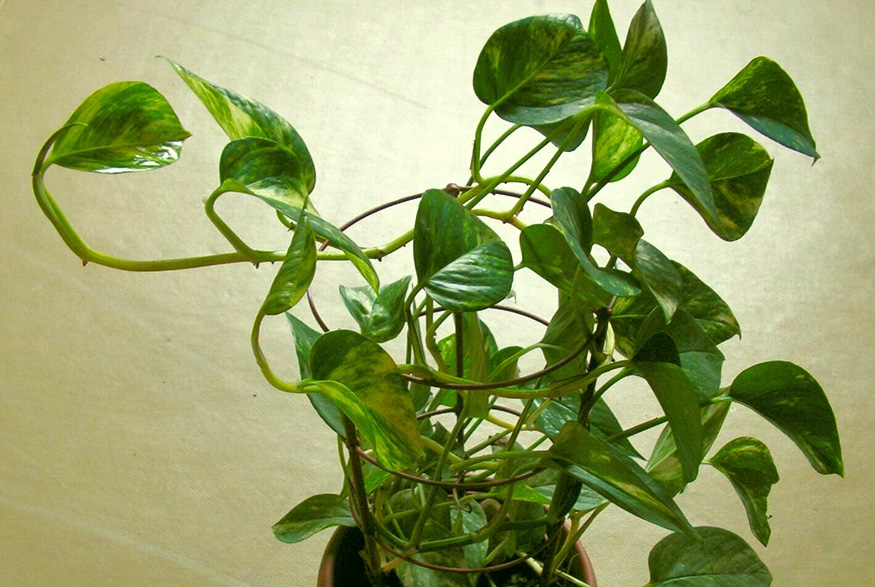
7. Golden Pothos
Epipremnum aureum goes by many other names, but in Canada it’s most commonly known as golden pothos or devil’s ivy. It’s hardy and looks especially great in a hanging basket or on a high stand so the vines can fall freely. It removes benzene, formaldehyde, xylene and toluene from the air but is toxic to cats and dogs.
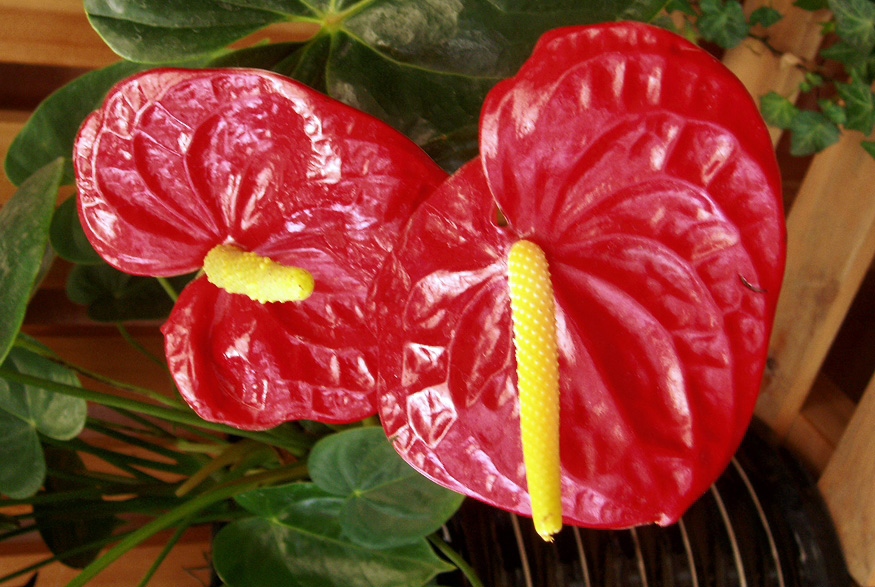
8. Flamingo Flower
The flamingo flower or flamingo lily, Anthurium andraeanum, removes formaldehyde, xylene, toluene and ammonia from the air. It’s a great option for adding colour to your home but is toxic, so keep it out of reach of kids and pets.
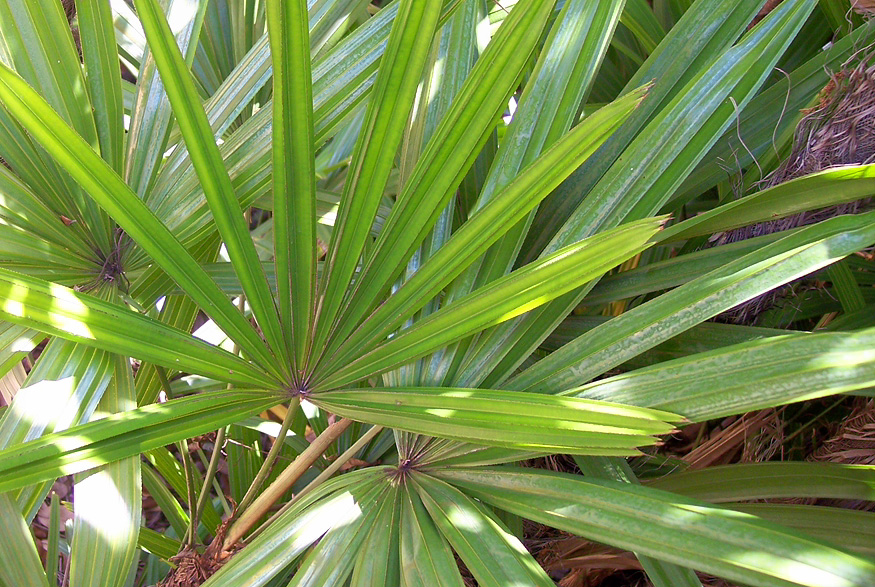
9. Broadleaf Ladypalm
The broadleaf ladypalm, Rhapis excelsa, is a popular plant for offices and in malls because it doesn’t need much light. It removes formaldehyde, xylene, toluene and ammonia and is non-toxic.
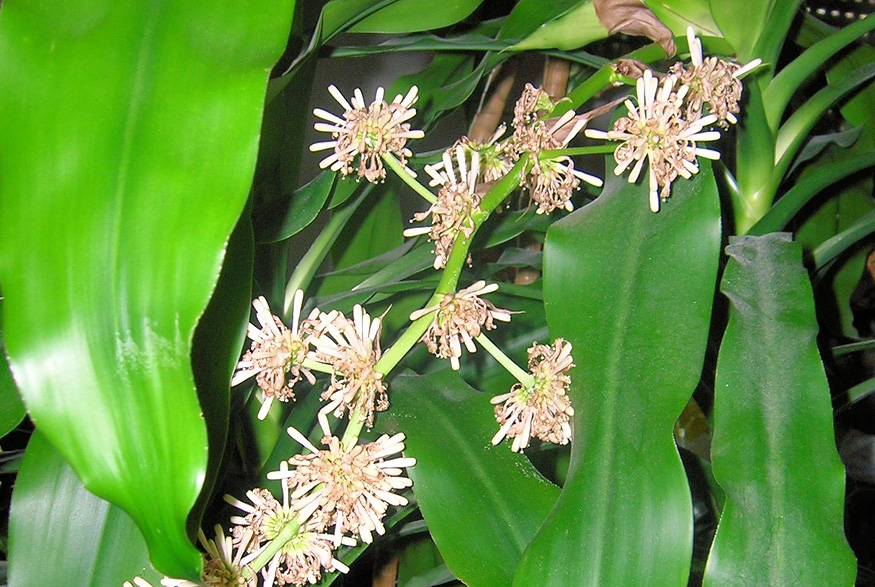
10. Cornstalk Dracaena
Dracaena fragrans or the cornstalk dracaena is a great choice if you tend to forget to water the plants, since it’s very hardy. It removes benzene, formaldehyde and trichloroethylene from the air but like most dracaena species it’s toxic to cats and dogs.
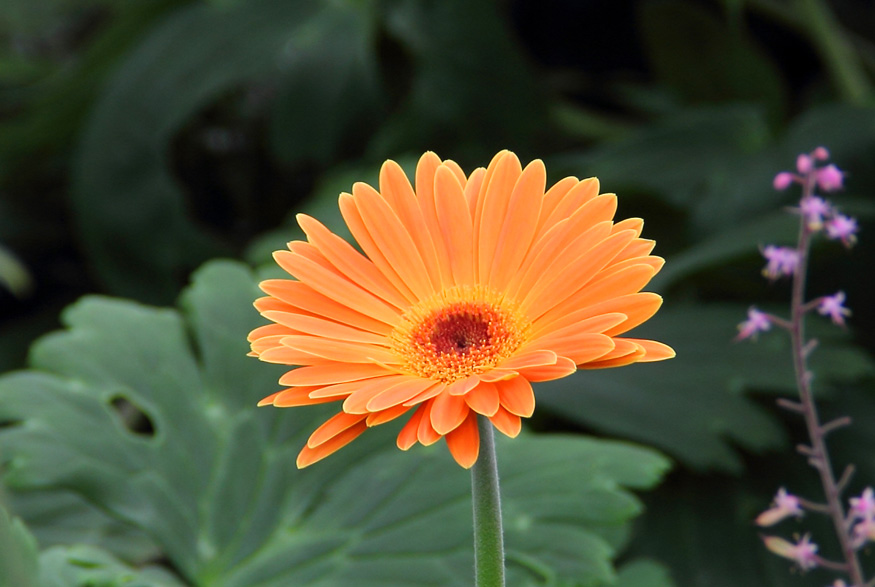
11. Barberton Daisy
Gerbera jamesonii is commonly known as the Barberton daisy, the Transvaal daisy or the gerbera daisy. It flowers throughout the year, is non-toxic and removes benzene, formaldehyde and trichloroethylene from the air.

12. Janet Craig Dracaena
The Janet Craig dracaena, Dracaena deremensis “Janet Craig”, is very hard to kill and because it likes humid conditions, it’s a good choice for your bathroom. It removes benzene, formaldehyde and trichloroethylene from the air but is toxic to cats and dogs.

13. Striped Dracaena
Dracaena deremensis “Warneckii”, the striped dracaena, is closely related to the Janet Craig dracaena but has striped leaves. Like the Janet Craig dracaena it removes benzene, formaldehyde and trichloroethylene from the air but is toxic to pets.
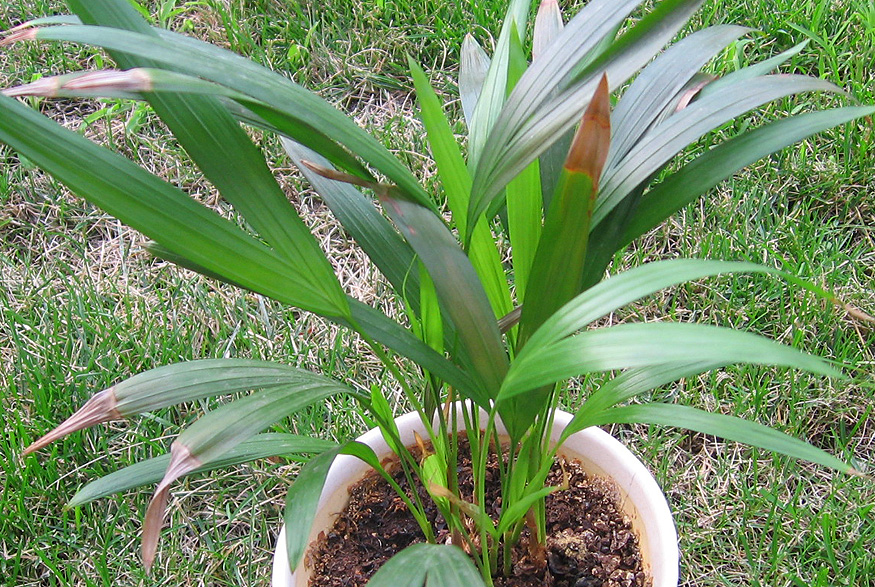
14. Areca Palm
The areca palm, Dypsis lutescens, is also commonly known as the butterfly palm or the golden cane palm. It removes formaldehyde, xylene and toluene from the air and is non-toxic. If you grow it indoors, be sure to let it get plenty of bright light.
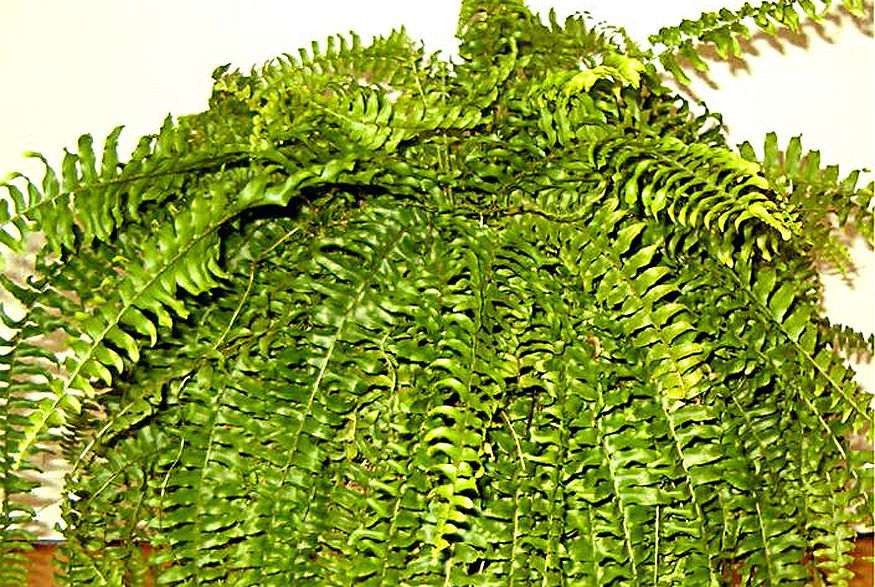
15. Boston Fern
The Boston fern, Nephrolepis exaltata “Bostoniensis”, likes humid conditions, so it’s a good choice for a hanging basket in your bathroom. It removes formaldehyde, xylene and toluene from the air and is non-toxic, which is good news for fern-loving cats.
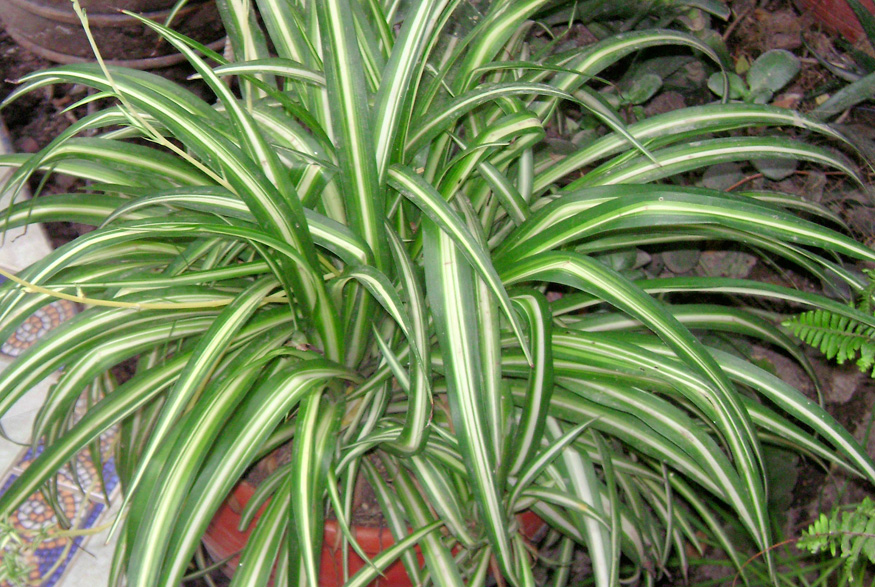
16. Spider Plant
Another name for the spider plant, Chlorophytum comosum, is hen and chickens. It removes formaldehyde, xylene and toluene from the air and is non-toxic. However, it’s sensitive to high levels of fluoride, so it would do better with filtered water than regular tap water.
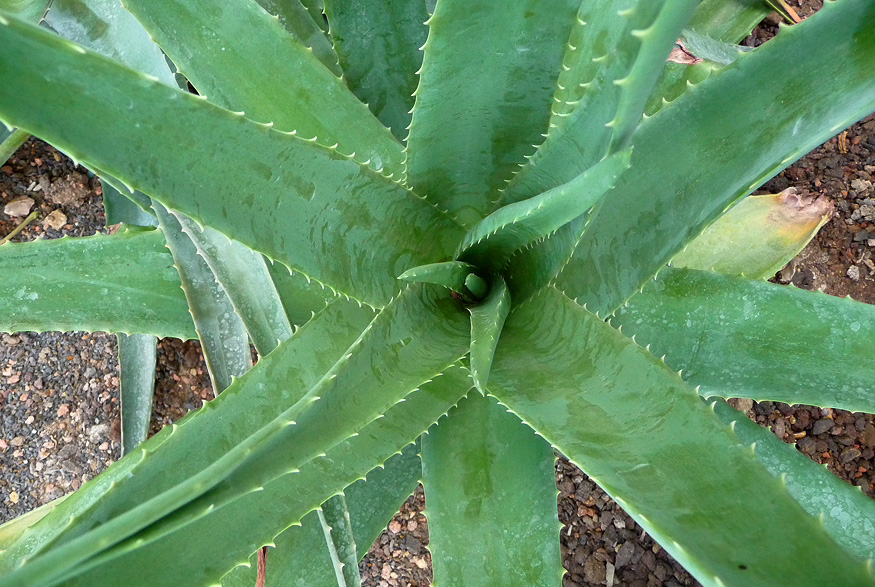
17. Aloe Vera
Aloe vera is easy to grow and makes a great addition to your kitchen window sill, especially since the gel from the leaves is good for burns. However, it is toxic to pets and can cause diarrhoea and stomach cramps if you eat it. It removes benzene and formaldehyde from the air.

18. Rubber Plant
The rubber plant, Ficus elastica, likes bright sunlight and humid but not too hot conditions. It removes formaldehyde from the air. However, it produces toxic latex that can irritate your eyes and skin, especially if you have latex allergies.

19. Dieffenbachia
There are many different species of Dieffenbachia, also known as dumb cane. They remove xylene and toluene from the air but are mildly toxic.
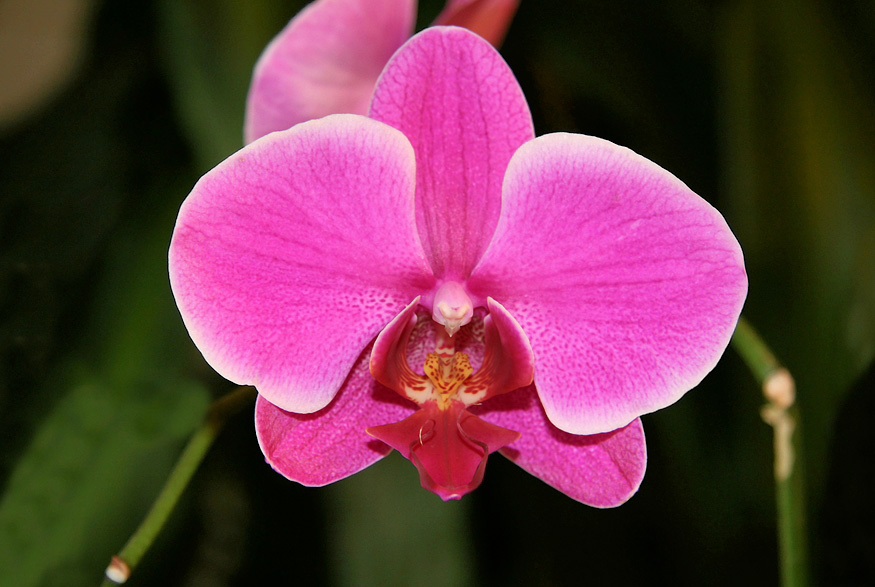
20. Moth Orchid
There are about 60 known species of Phalaenopsis or moth orchids. They thrive as houseplants, are non-toxic and come in many different colours. A bonus is that they remove xylene and toluene from the air.
Home Network your inbox.
By clicking "SIGN UP” you agree to receive emails from Home Network and accept Corus' Terms of Use and Corus' Privacy Policy.




